Best evergreen climbers – 10 impactful vines to add foliage, flowers and year-round color to your yard
Using some of the best evergreen climbers will ensure your garden walls and fences look good even during deep, dark winter

Thomas Rutter
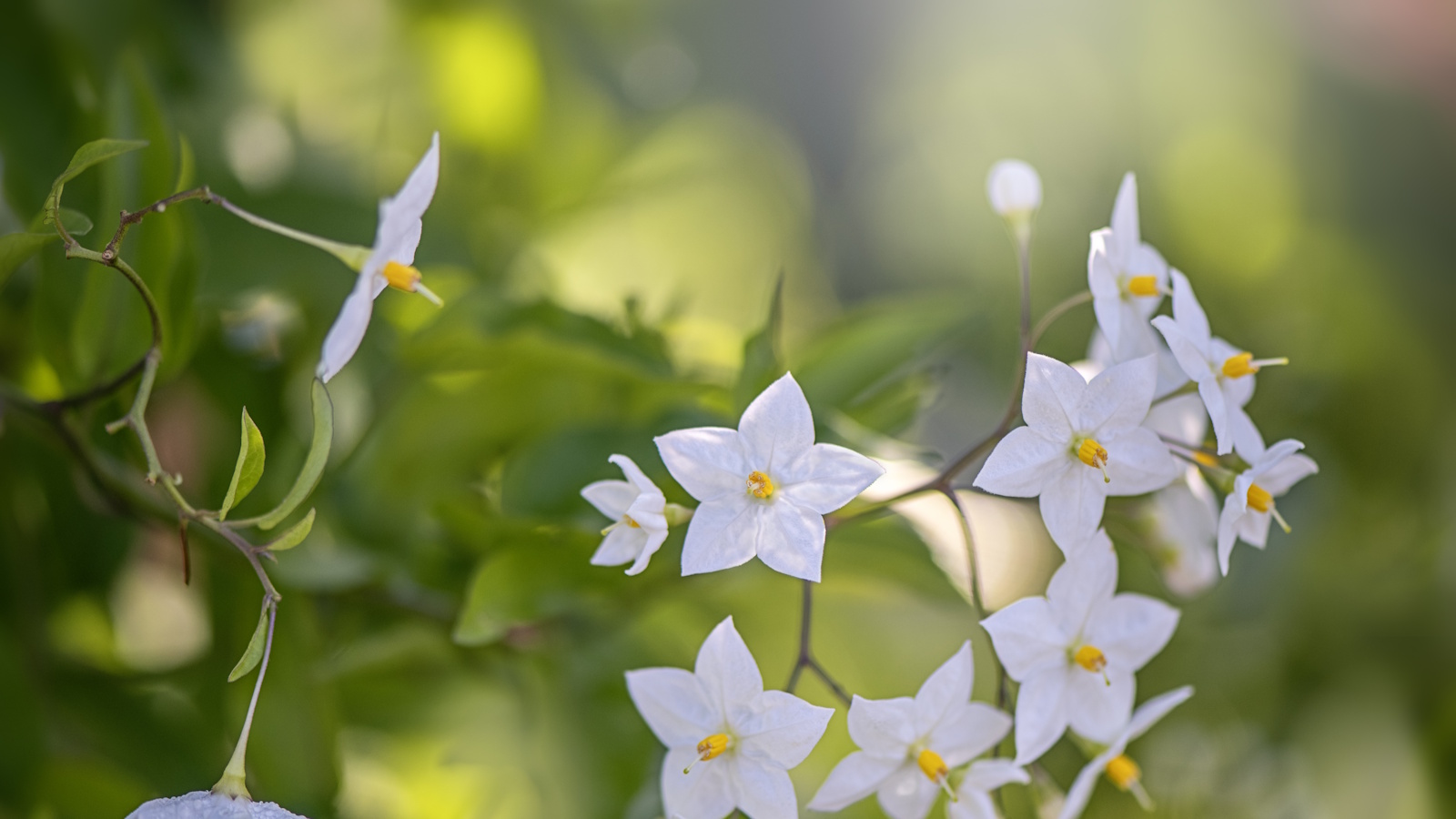
- 1. Best evergreen climbers for shade
- 2. Best evergreen climber for pots
- 3. Best evergreen climber for scent
- 4. Best evergreen climber for trellis
- 5. Best evergreen climber for flowers
- 6. Best evergreen climber for summer and fall color
- 7. Best evergreen climber for filling walls
- 8. Best evergreen climber for pollinators
- 9. Best evergreen climber for winter color
- 10. Best evergreen climber for privacy
- FAQs
Who wants to stare at bare walls or empty fences in their yard? No one, in truth. So, using some of the best evergreen climbers is always a good idea, especially if you want to guarantee year-round interest even during the depths of winter.
Making the most of vertical surfaces in your plot is also a good idea to visually extend your garden's boundaries and to create privacy, which can be important in cities, where many of us have overlooked yards. And while deciduous jasmines and clematis are striking in summer, incorporating one or more of the best evergreen climbers is a must, in my opinion.
So, if you are looking to grow some of the best climbing plants this year, I have put together an expert-approved guide for the greenest options with year-round interest, including some you might not have heard of before.
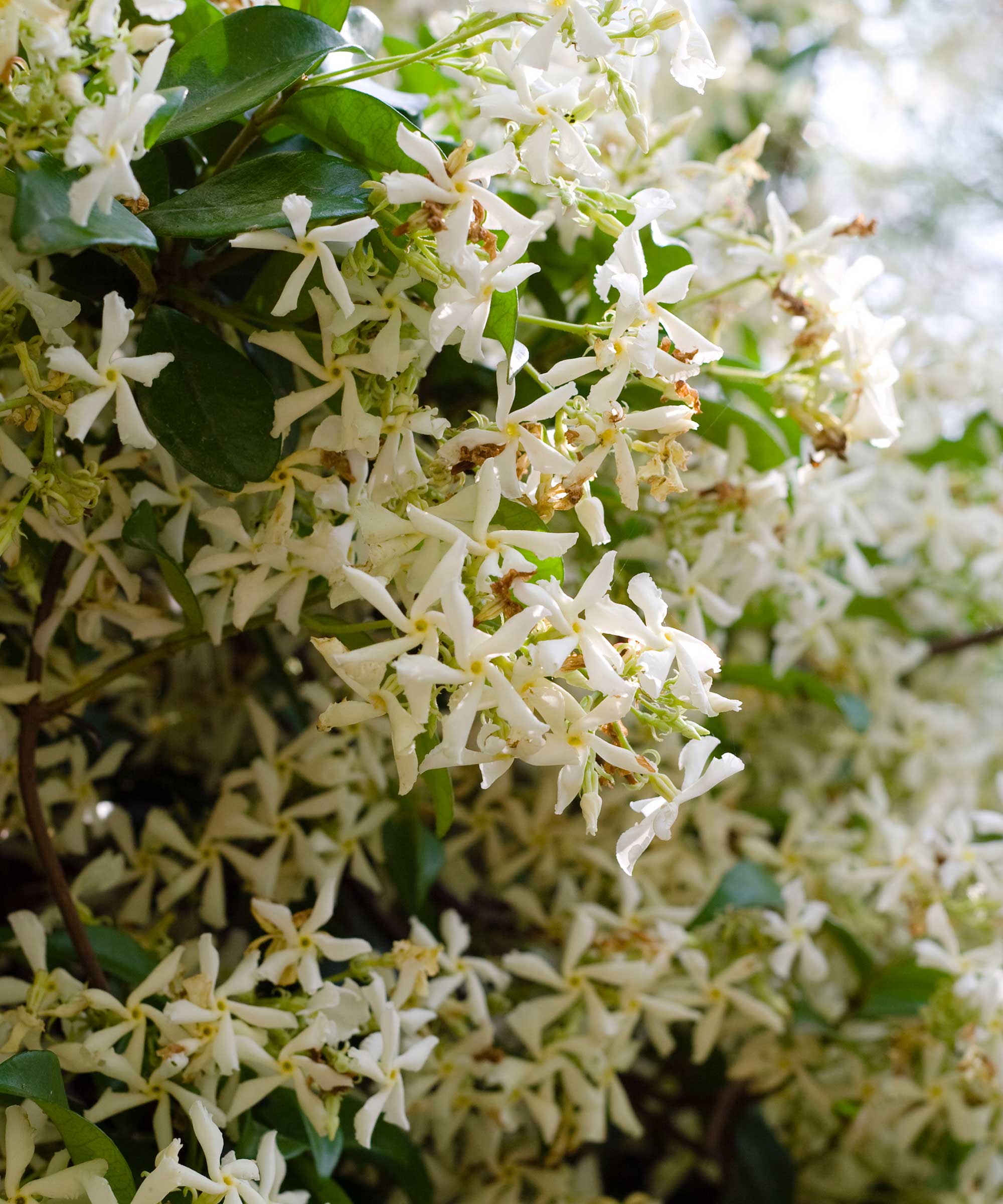
10 of the best evergreen climbers
I have always loved climbing plants. Wherever I have gardened, I have found that growing upwards helps to make the most of a space. Even on balconies, using tripods or trellises can help to maximize growing space. Here are 10 of the easiest climbers that are evergreen, ideal for those seeking vertical garden ideas.
1. Best evergreen climbers for shade
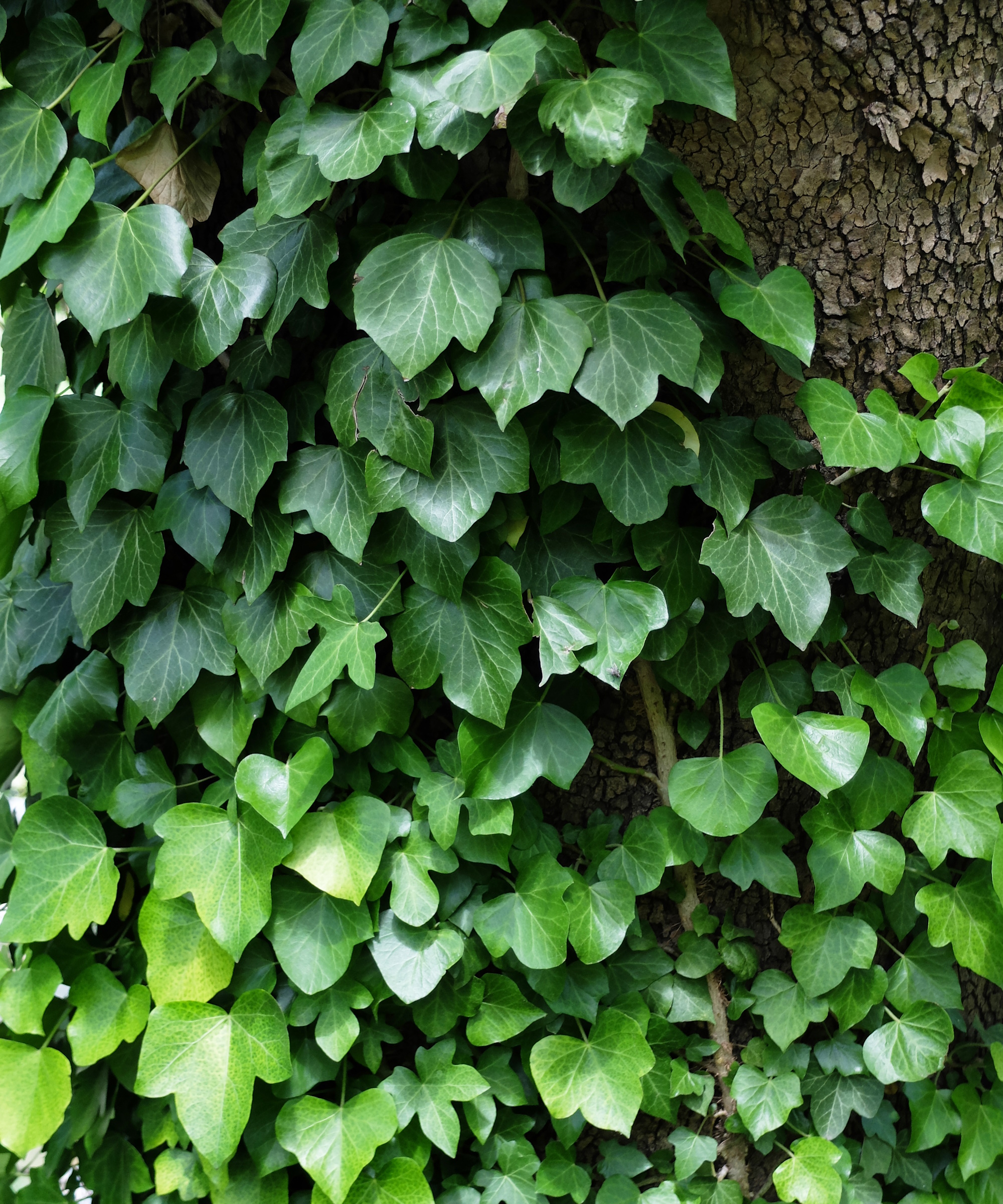
Often thought of as one of the best climbing plants for shade, ivy is the ultimate plant for providing evergreen cover. This vigorous plant will grow almost anywhere from US hardiness zone 4 plus, although be warned, it can be a vigorous grower with invasive tendencies, so regular pruning is necessary.
Try this English ivy, available from Nature Hills, for a quick-growing evergreen option.
'Give evergreen ivy a hard prune once a year during late winter or early spring before the nesting season begins,' says Jen McDonald, garden expert and a co-founder of Garden Girls. 'Many wildlife species including birds and bees depend on ivy as a source of shelter, so wait until this time to trim.'
Design expertise in your inbox – from inspiring decorating ideas and beautiful celebrity homes to practical gardening advice and shopping round-ups.
One species to consider is Hedera colchica ‘Sulphur Heart’, which can be used either to clad walls or as ground cover. This variegated variety gives a bit of light reflection in the shade and is effective when growing against walls or trees.
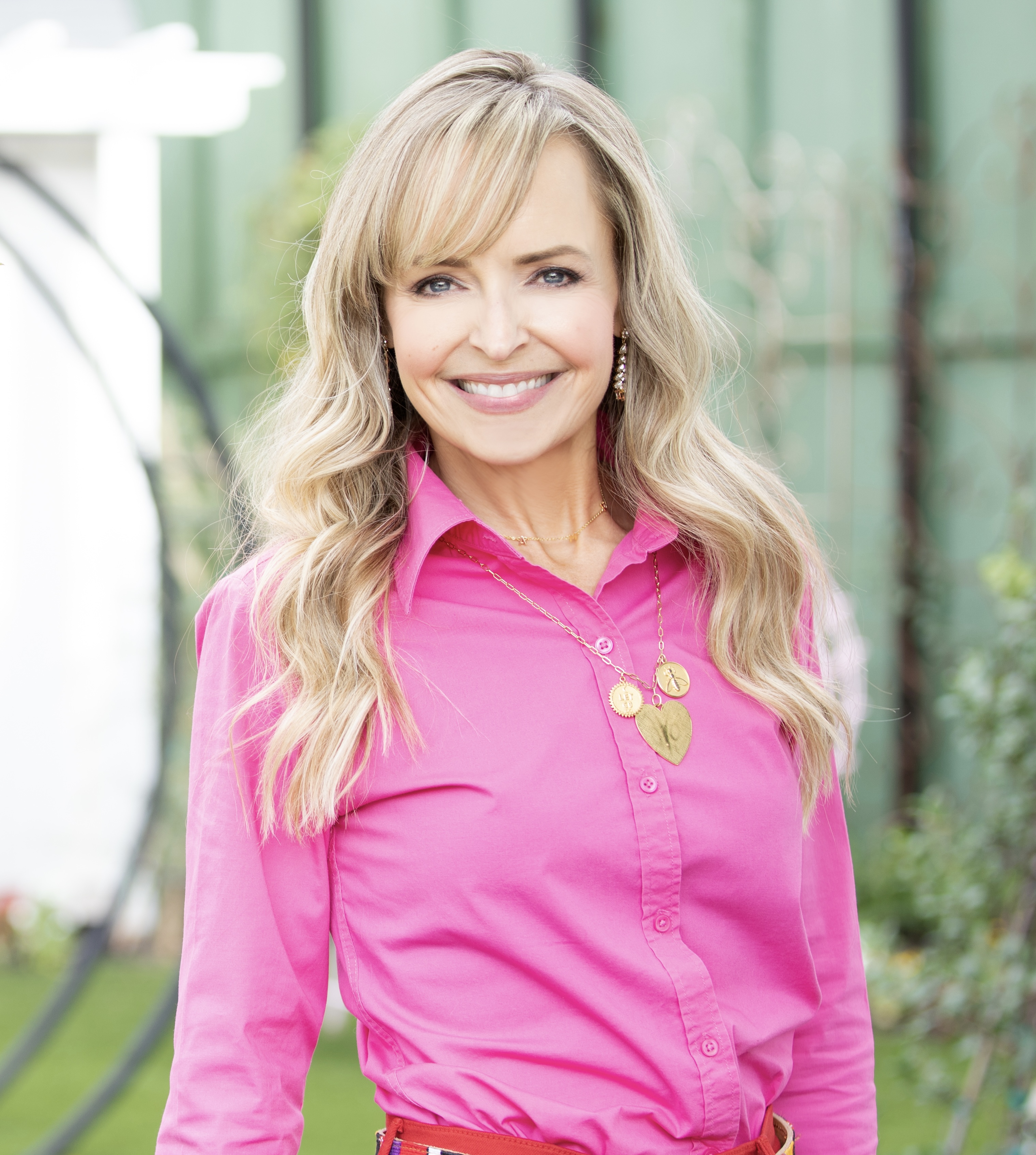
Jen McDonald is a garden expert and co-founder of Garden Girls, LLC, based in Houston, TX. With 14 raised garden beds and 400 square feet of garden space, Jen grows cut flowers to peanuts, amaranth to okra, and everything in between.
2. Best evergreen climber for pots
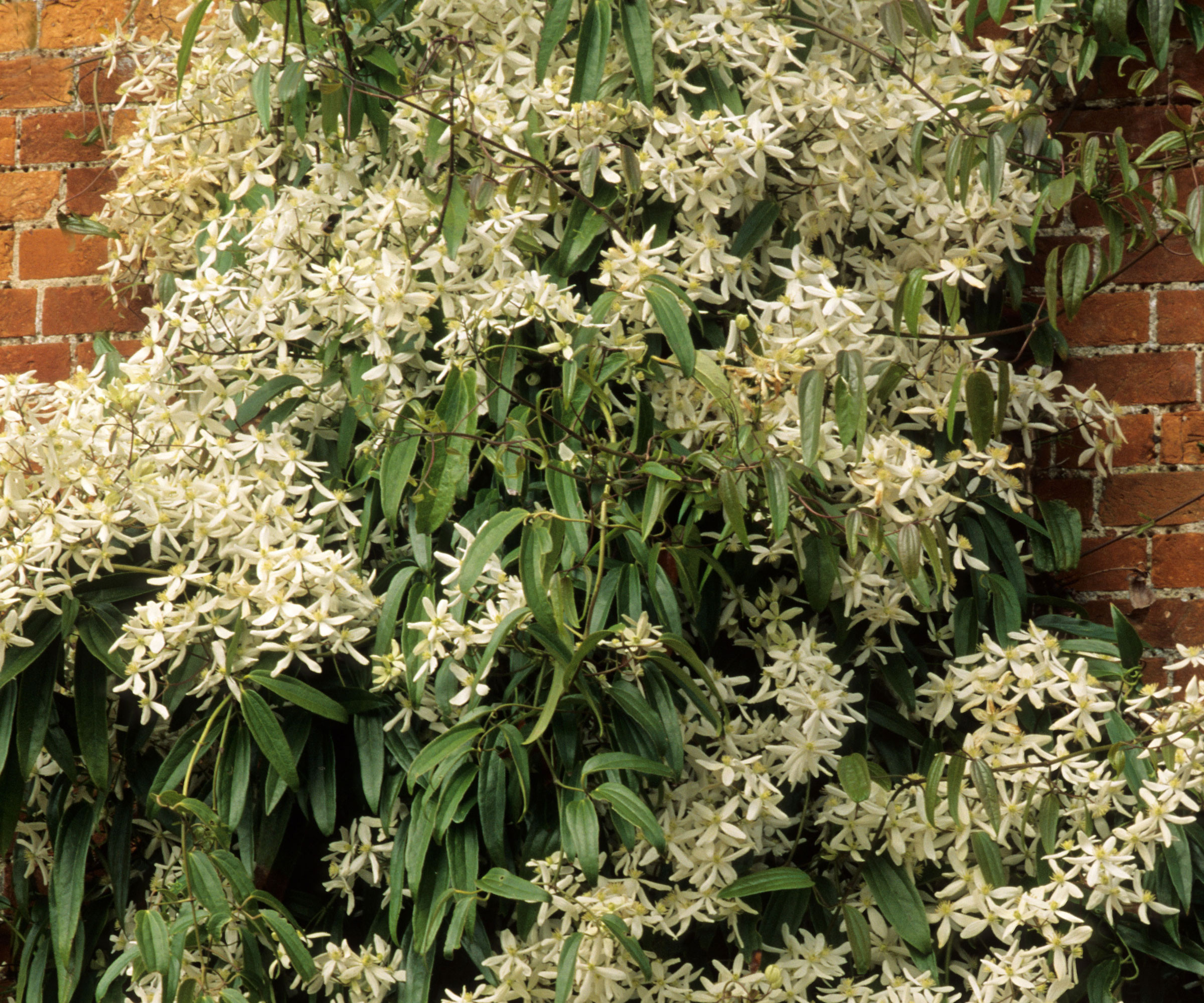
If you have a small space, why not learn how to grow evergreen clematis? This impressive vine can be grown in pots or borders, and more than earns its spot in any yard.
Evergreen clematis, or Clematis armandii, is one of the best clematis species to select and can easily be grown from zone 6 to zone 9, thriving in a sunny spot or part-sun-part-shade.
While slow to establish, eventually this vine can reach up to 20 feet in length. Annual pruning will keep it compact and growing where you want it to grow.
3. Best evergreen climber for scent

One of the best flowering climbers has to be star jasmine, Trachelospermum jasminoides.
Star jasmine is 'known for its fast growth rate, averaging about 12 to 24 inches per year,' says Mike Murphy, plant expert and owner of You Had Me At Gardening.
'Regular trimming helps to keep this vigorous evergreen climber in check,' Mike says.
The neat, dark-green foliage can be trained in any manner of shapes: for example, on pergolas or hazel domes.
When in flower during the summer months, the heady fragrance is also unbeatable. Grow star jasmine somewhere sheltered from US hardiness zone 8 plus.
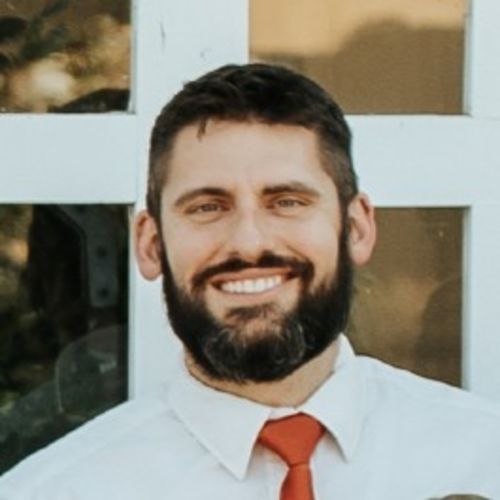
Mike is the owner of You Had Me At Gardening. He grew up gardening with his parents and grandparents. He enjoys his backyard orchard of dwarf fruit trees, raspberry and blackberry patches, and raised garden boxes. In addition to his perennials, Mike enjoys sprouting new fruit and vegetable seeds every spring.
4. Best evergreen climber for trellis
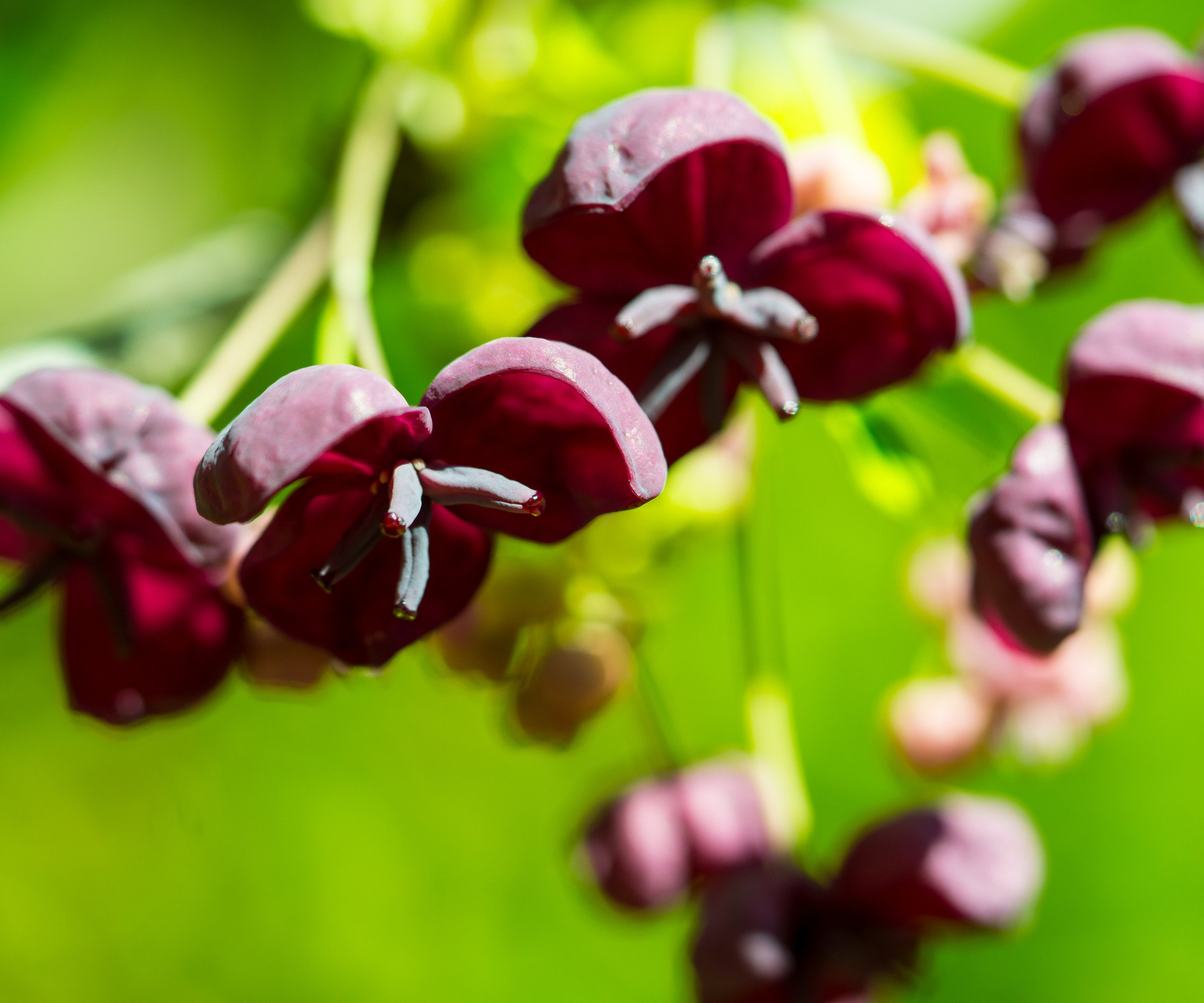
The fast-growing Chocolate vine is one of the best climbers to grow in pots with a trellis or plant support, producing masses of attractive dark maroon chocolate-scented flowers in summer.
Growing best from zone 5 plus, the chocolate vine, or Akebia quinata, will retain much of its foliage in milder zones even during the winter, although in zones 5 and 6, you may notice some leaf drop.
For the best results, grow in sun or part shade, and shelter in cold areas.
Live chocolate vines are available from Amazon. Be warned, however, that in some regions, this species is considered an invasive climber, so do your homework before adding it to your collection.
5. Best evergreen climber for flowers
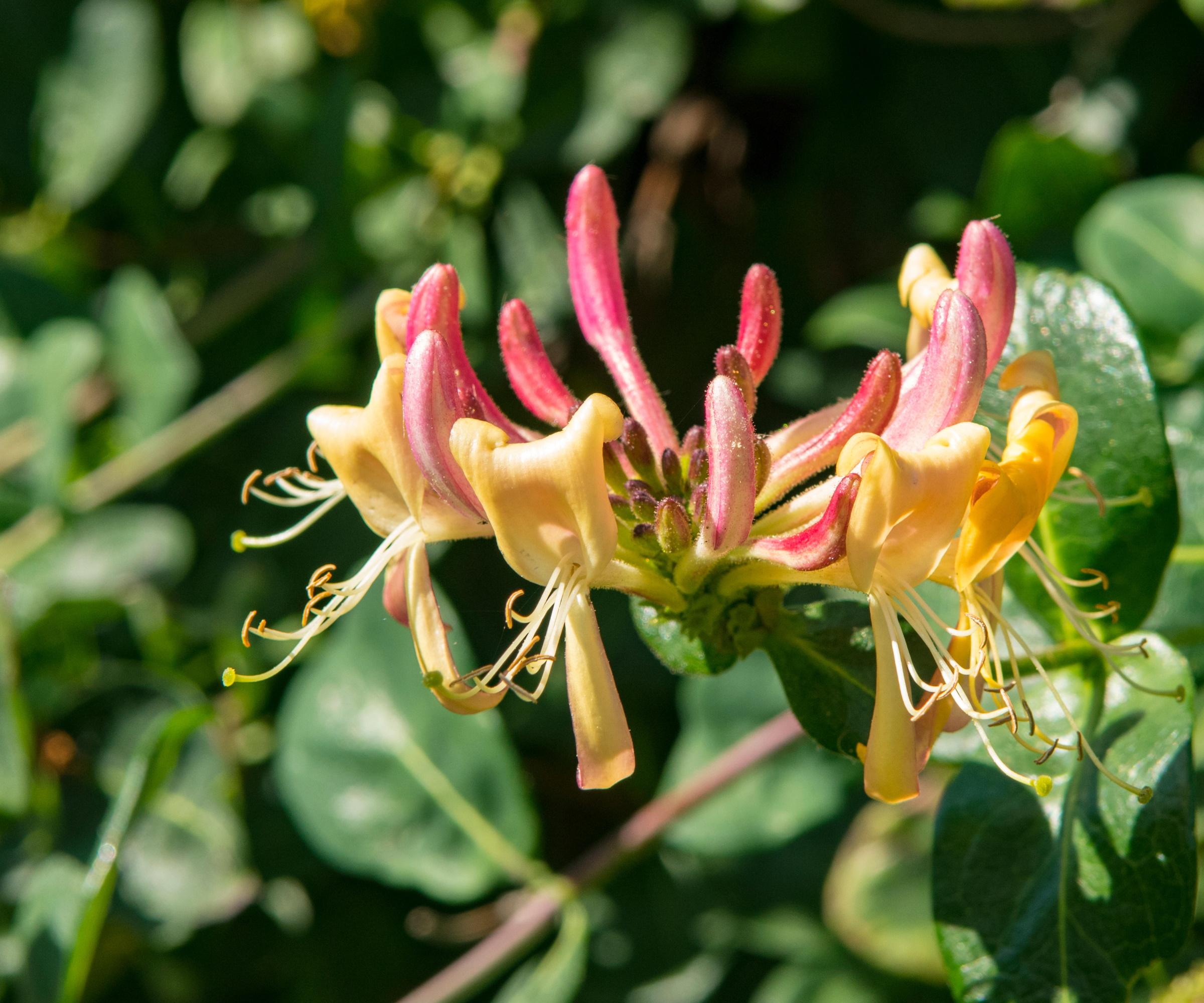
If you are looking for one of the best evergreen climbers for flowers and fragrance, Lonicera implexa, otherwise known as the evergreen honeysuckle, is a good option.
One of the best honeysuckles, this species has large, dense, glossy leaves and produces spring flowers that smell of melon and jasmine, ideal if you want to make a sensory garden.
Plant this climber in part-shade or sheltered sun, growing best from US hardiness zone 8 plus.
6. Best evergreen climber for summer and fall color
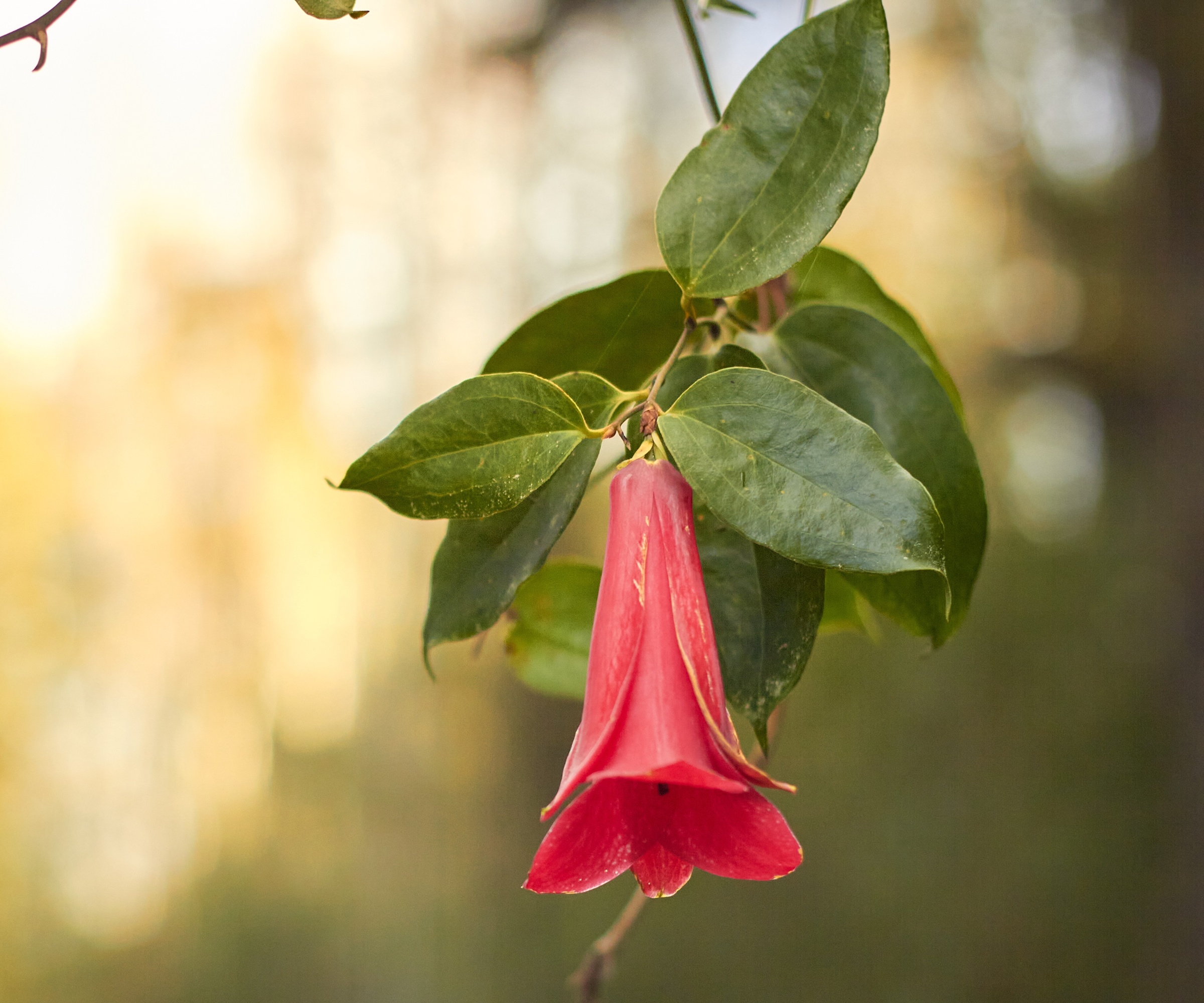
The Chilean bellflower, or Lapageria rosea, is hung with enchanting, big, waxy pink-red blooms during late summer and fall.
It grows best in equatorial regions like US hardiness zones 9 and 10, so in cold regions, this tender plant should be grown in a conservatory.
Provide it with something to twine around, such as an obelisk, available from Walmart, growing in moist, well-drained acid-to-neutral soil, in a sheltered semi-shade or shaded spot.
7. Best evergreen climber for filling walls
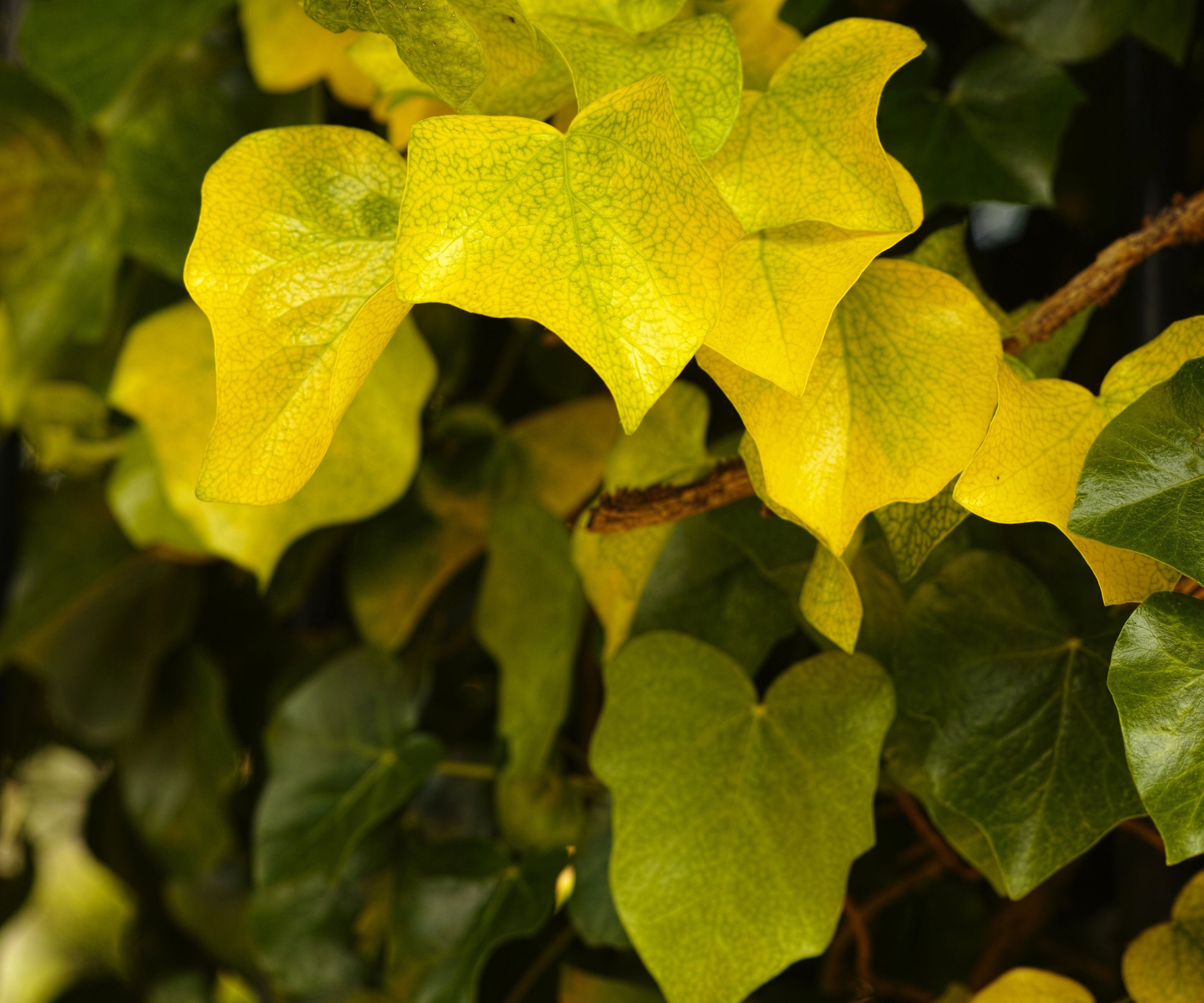
Try growing an English ivy variety like Hedera helix ‘Buttercup’, which will inject the garden with greenery, even in the depths of winter. This species has lemon-lime coloring, which is unique for an evergreen.
What's more, this species is slow-growing and far less vigorous than other forms of H. helix, which ought to be avoided in the midwest states, where they are considered invasive.
Growing best in US zones 4 to 9, this ivy thrives in well-drained neutral to alkaline soil.
8. Best evergreen climber for pollinators
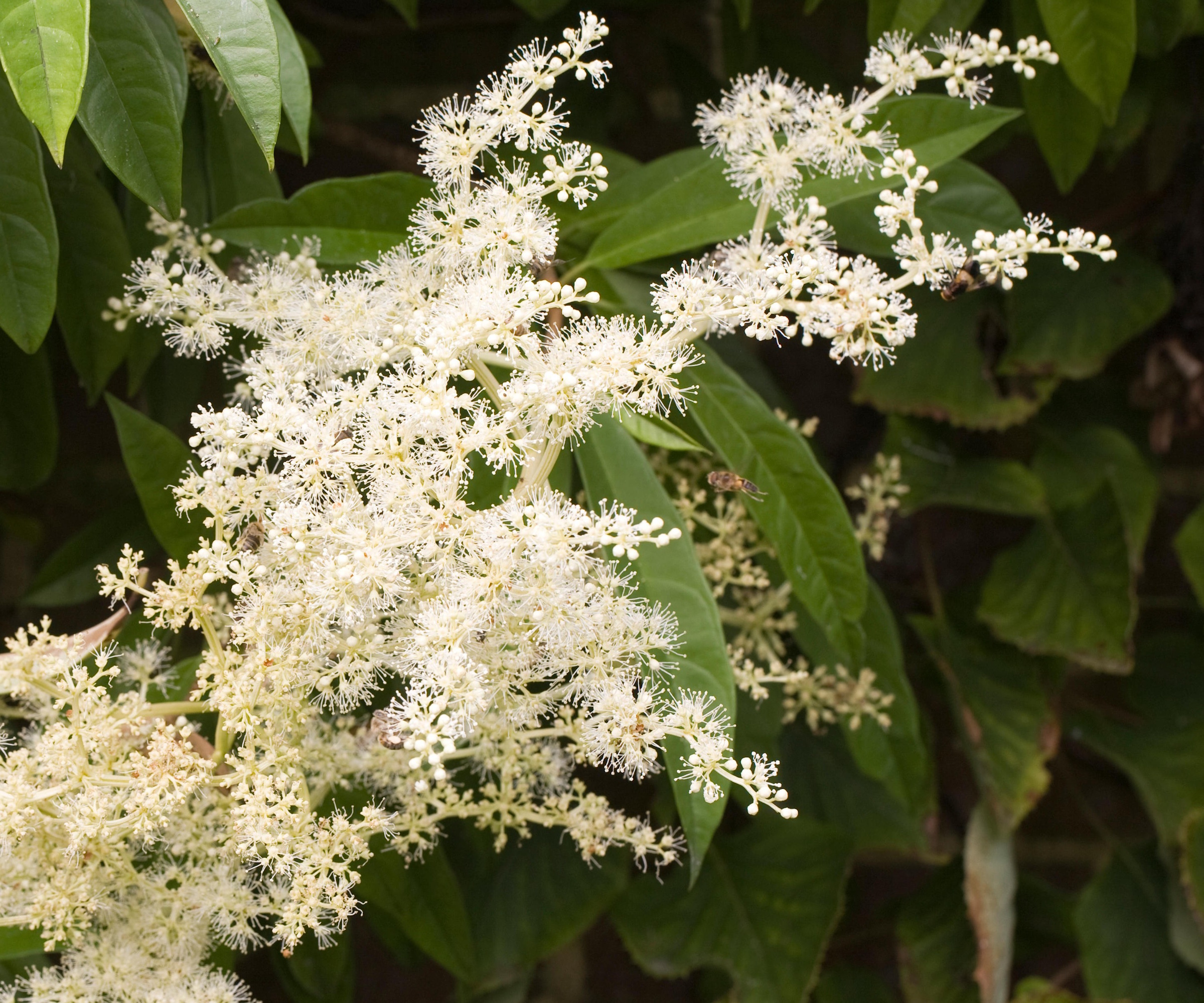
Pileostegia viburnoides is a leafy, self-clinging, climbing hydrangea that will thrive in darker yards. The tiny ivory flowers open in clouds from August above long, glossy green leaves.
It can take a few years to bloom, but it’s worth the wait. Growing well in US hardiness zone 8 plus, the nectar-rich blooms will soon attract every insect in the area, which is great for your wildlife garden ideas.
However, this is probably one plant to keep a good distance away from your seating areas, unless you enjoy buzzing company when you are dining.
9. Best evergreen climber for winter color
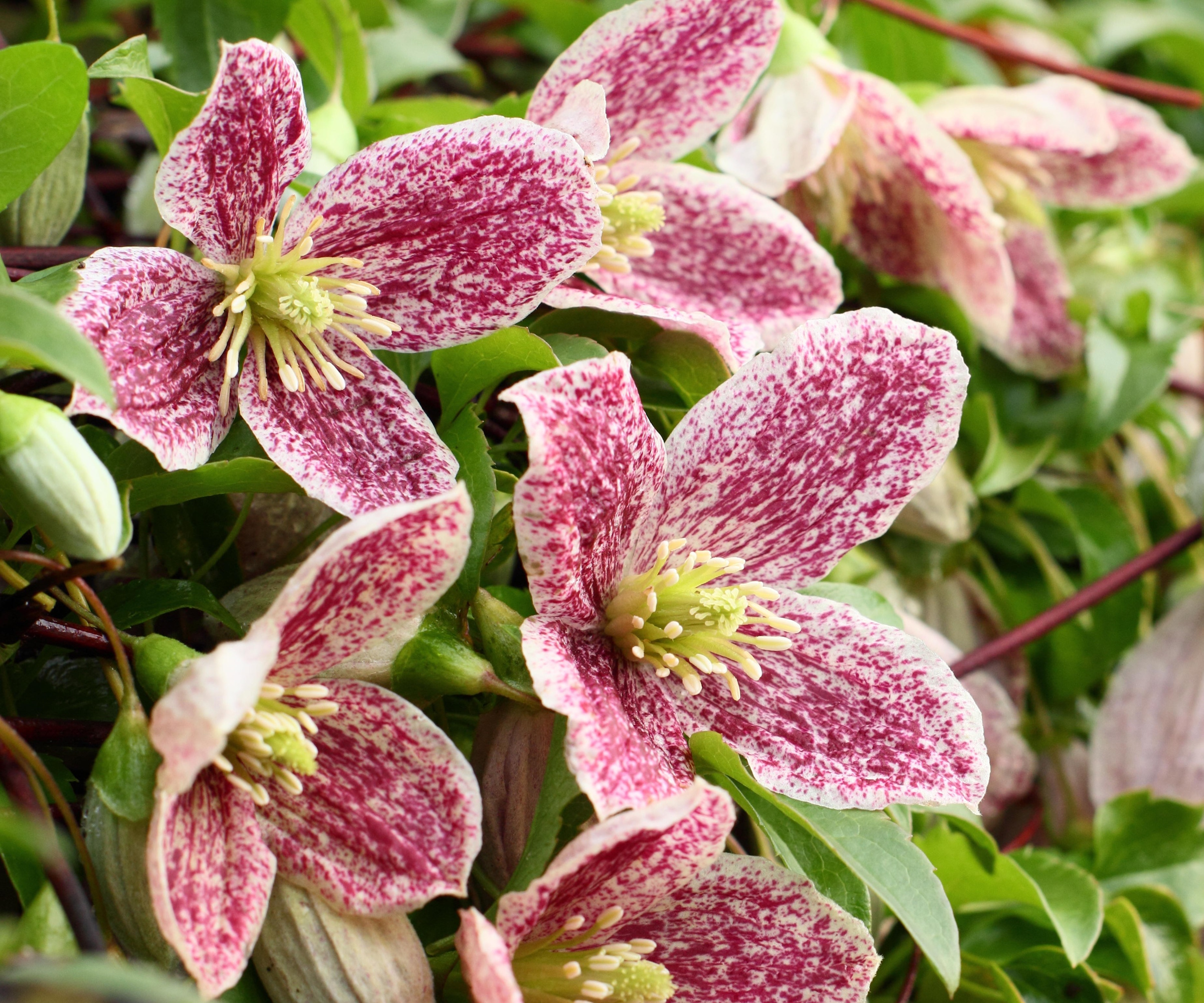
Clematis cirrhosa var. purpurascens ‘Freckles’ is one of the best clematis varieties that is surprisingly evergreen. The flowers open from November to February, with heavily speckled maroon blooms and provide food for bees.
You can pretty much grow them anywhere in the garden, including fences and free-standing trellis.
Being more tender than most other clematis, ‘Freckles’ requires a sheltered south or west-facing wall, in moist, well-drained neutral to alkaline soil, growing best from US hardiness zone 7 plus.
10. Best evergreen climber for privacy
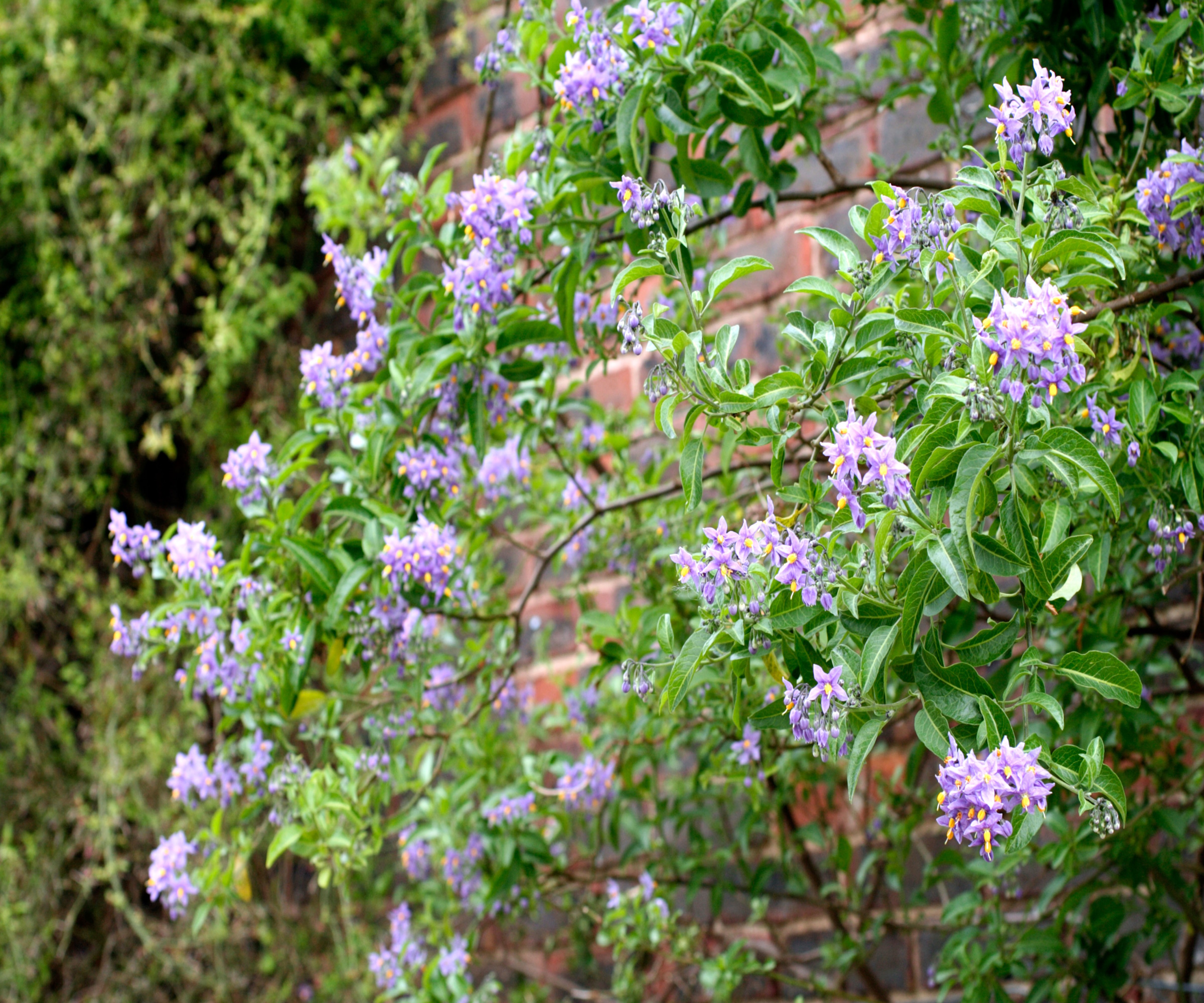
Solanum crispum ‘Glasnevin’, or the Chilean potato tree, is a climbing shrub that produces fragrant blue-purple flowers in summer and early fall, followed by inedible yellow fruit.
Although it is in the potato family, it's one of the prettiest evergreen plants, but be warned that all parts of it are poisonous.
Grow in moist, well-drained neutral to alkaline soil in the sun and tie in to a wire framework or trellis. It is evergreen in warm regions, but only hardy down to US zone 9.
One of our favorite varieties is the striking white potato vine, or Solanum laxum 'Album', which produces a mass of starry pale blooms each year.
FAQs
What is a fast-growing evergreen climber you recommend?
Star jasmine is a fast-growing evergreen climber that will happily scramble over trellis, pergolas and arches. It does need to be tied in and pruned to keep it shapely, but it retains its glossy green leaves throughout the year and rewards you with star-shaped, scented flowers in spring.
Whatever climbers you decide to grow, be sure to keep them well watered for the first year, while they settle into your yard. Most species will eventually become drought-tolerant, particularly ivies and honeysuckles, but keep an eye on them during year one for the best results.
For more inspiration, see our guide to winter climber ideas, and fill your yard with even more evergreen options.
Shop planting accessories
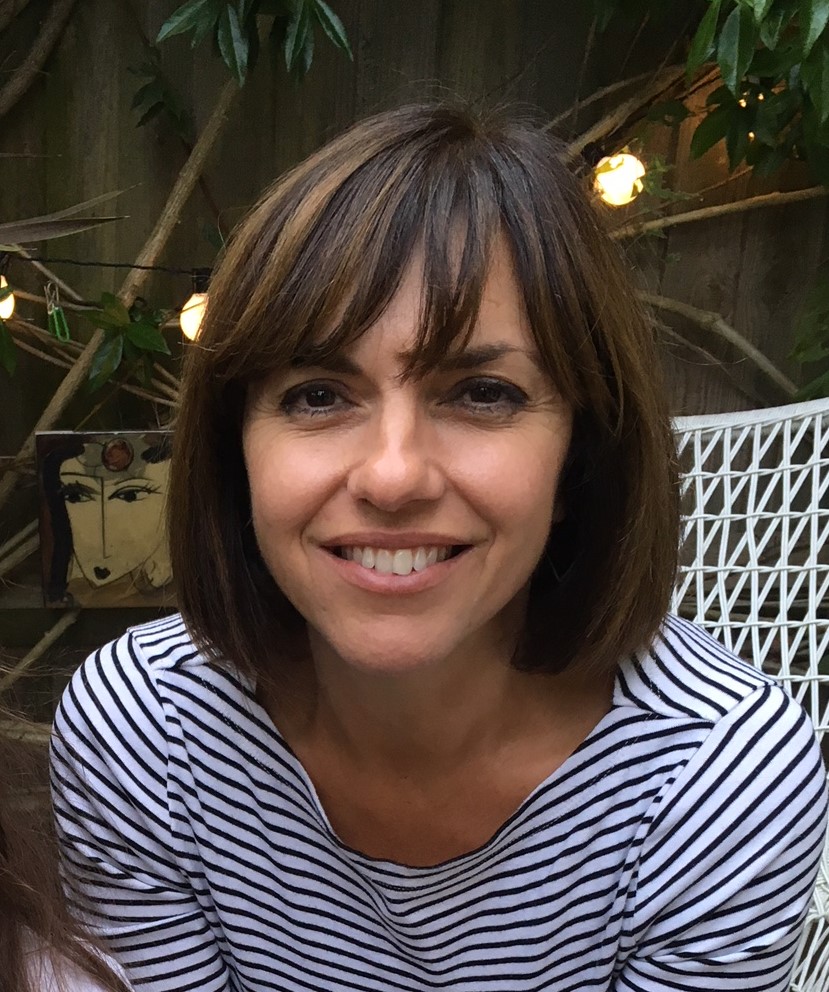
Lucy Searle has written about interiors, property and gardens since 1990, working her way around the interiors departments of women's magazines before switching to interiors-only titles in the mid-nineties. She was Associate Editor on Ideal Home, and Launch Editor of 4Homes magazine, before moving into digital in 2007, launching Channel 4's flagship website, Channel4.com/4homes. In 2018, Lucy took on the role of Global Editor in Chief for Realhomes.com, taking the site from a small magazine add-on to a global success. She was asked to repeat that success at Homes & Gardens, where she has also taken on the editorship of the magazine.
- Thomas RutterContent Editor

![Miracle-Gro Mg86205 General Utility Gloves – [small/medium], Synthetic Leather Padded Palm Gloves, Spandex Back, Adjustable Hook and Loop Wrist](https://cdn.mos.cms.futurecdn.net/nTAeAiC8a2MyyhZSnu3uAT.jpg)
